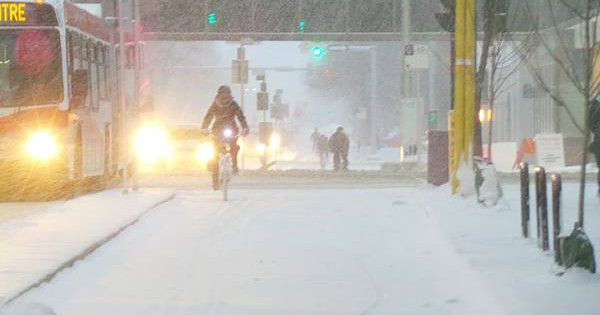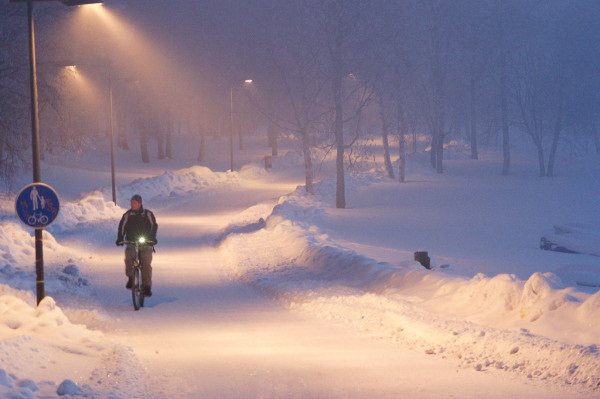Protected Bike Lanes Boost Biking In Snowy Places More Than Warm Places
Originally published on Bikocity.
While protected bike lanes seem like a bit of a no-brainer if one wants to spur greater bike use, there are pretty definitely some regions/circumstances where the gain to be had in ridership is greater than in others. Cold, snowy places, for instance.
No matter how dangerous riding a bike amongst cars can be at the best of times, once ice and slush are added to the equation, it’s no surprise that many simply decide to leave their bikes at home during the winter and get in a car or take the bus.
With protected, dedicated bike lanes or off-street trails, though, things could be made considerably safer — giving people further incentive to keep their bike out of storage and continue to bike throughout the winter. Granted, this is already the case in some parts of the world (just not the US).
People For Bikes provides more on that:
What has become clear is that when the conditions are right, winter bicycling can be normal. It can be child’s play. In Oulu, Finland, nearly 50% of 13-17 year-olds bicycle year-round.
Which raises the question: why? What is so right about the conditions in Oulu? The short answer is that they have a 500-mile combined bicycling and pedestrian network connecting homes with workplaces, schools, shopping and other destinations people need to reach in daily life. The network is separate from the road network used by cars and includes 300 grade-separated crossings and ample space alongside facilities for snow storage. The network is fully lighted and 98% of the network is maintained throughout the winter.
This is, of course, Finland that we’re talking about here, so it may not be a simple thing to transfer findings from such a situation to a place like the US. The rather relaxed method of trail maintenance during the winter should be noted, though. Rather than the use of salt, the snowy trails are simply compacted and sprinkled with gravel. (I’ve had experience with such an approach in parts of Canada and can vouch that it works well enough.)
Hmm, what would it take you to ride throughout the winter? (Presuming you like living somewhere cold and snowy.)
Photos via Eltis, Eltis, City of Calgary Bicycle Program, and Pekka Tahkola, respectively.
Have a tip for CleanTechnica? Want to advertise? Want to suggest a guest for our CleanTech Talk podcast? Contact us here.
Latest CleanTechnica.TV Video

CleanTechnica uses affiliate links. See our policy here.




